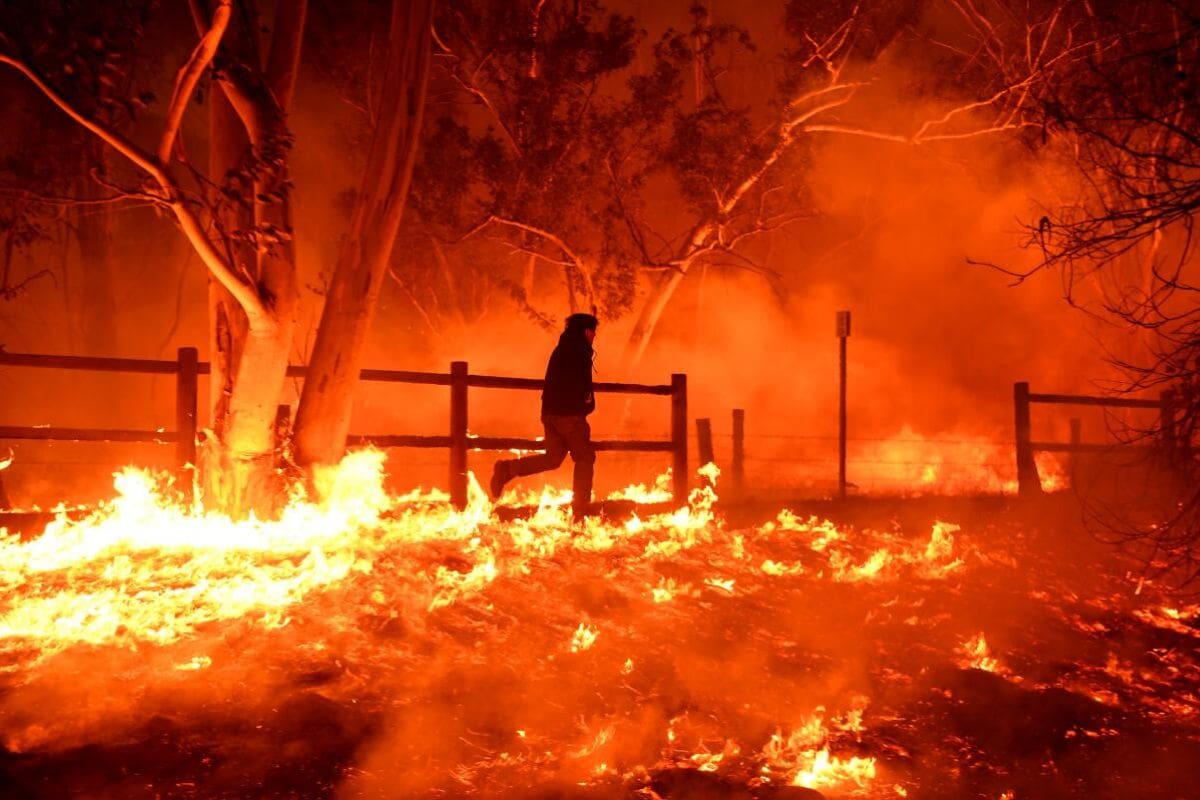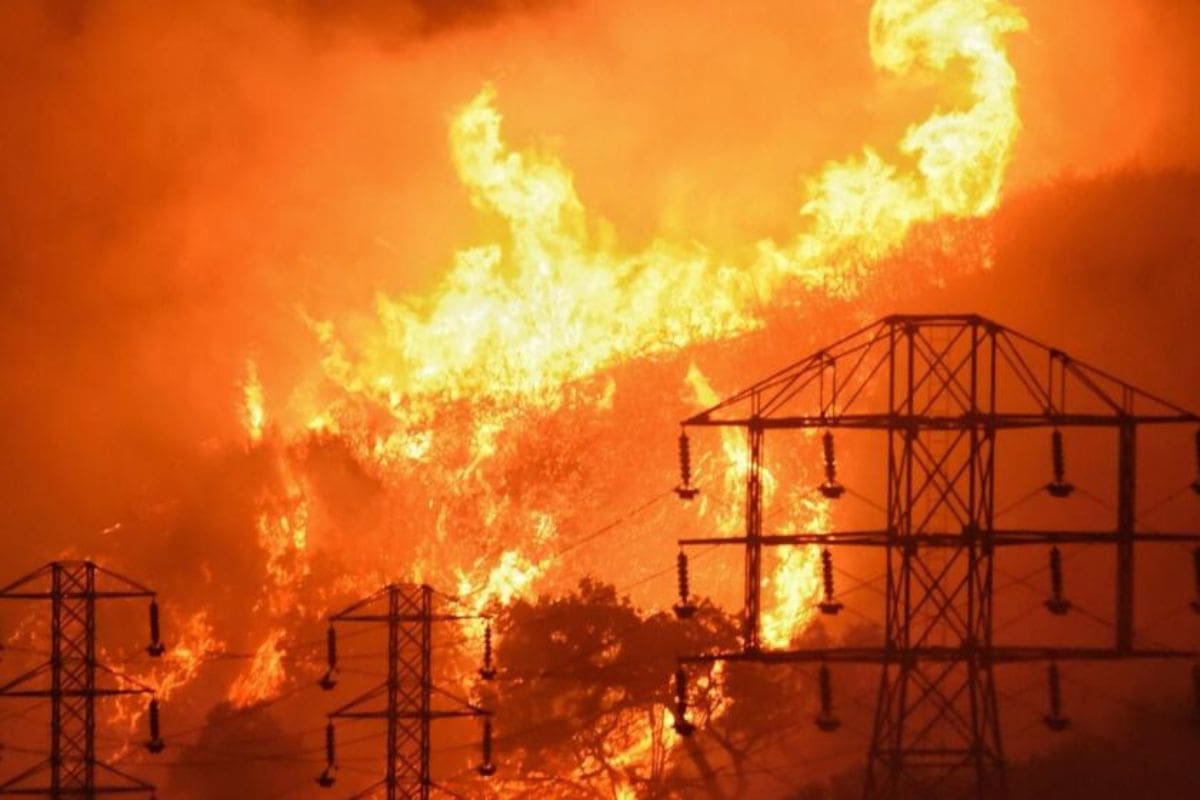Southern California Edison Settles: In a historic turn of events, Southern California Edison has finalized a groundbreaking $80 million settlement for the damages caused by the 2017 Thomas Fire. This agreement marks a significant milestone in the ongoing narrative surrounding the fire’s origin and aftermath.
As this settlement unfolds, it sheds light on the complex implications and repercussions that such natural disasters can have, not only on the environment but on communities and infrastructure as well. Edison’s response to these events, along with its future commitments, raises crucial questions about accountability and the path forward.
This settlement is not just about financial compensation but also about the lessons learned and the imperative societal changes that must follow.

Landmark Settlement: Southern California Edison to Pay $80 Million
Has Southern California Edison reached a historic agreement to pay $80 million in a groundbreaking settlement with the federal government following the 2017 Thomas Fire? Indeed, Southern California Edison has made a significant stride by agreeing to this landmark settlement. The $80 million deal represents a crucial step in addressing the aftermath of the devastating Thomas Fire, one of the most destructive wildfires in California’s history.
This agreement stands out as a record settlement, as federal officials emphasize its importance in covering the extensive costs associated with combating the fire and rehabilitating the affected public lands. The settlement underscores a sense of responsibility assumed by Southern California Edison in contributing towards the restoration and recovery efforts in the wake of the fire’s widespread impact.
The Heart of the Matter: The Thomas Fire’s Origin and Impact
The ignition of the Thomas Fire on December 4, 2017, stemming from a combination of Santa Ana winds and drought-stricken vegetation, had far-reaching consequences that extended beyond the immediate devastation of over 280,000 acres in Southern California.
Impact of the Thomas Fire:
- Loss of Life: Tragically, the fire claimed lives as it tore through communities, leaving a lasting impact on families and loved ones.
- Environmental Devastation: The blaze’s ferocity ravaged the landscape, destroying habitats and ecosystems that will take years to recover.
- Infrastructure Damage: Homes, businesses, and critical infrastructure were consumed by the flames, leading to widespread destruction and economic loss.
- Secondary Disasters: The fire triggered a devastating mudslide in Montecito, compounding the destruction and further endangering residents in the affected areas.
The Thomas Fire’s origin and impact underscore the importance of understanding the complexities of wildfire management and the necessity of preventive measures to mitigate future disasters.

Implications and Repercussions: Navigating the Complex Aftermath
Navigating the intricate web of implications and repercussions stemming from the aftermath of the Thomas Fire requires a comprehensive understanding of the interplay between climate change, infrastructure vulnerabilities, and the imperative to safeguard human lives and property. The $80 million settlement between Southern California Edison and impacted parties serves as a pivotal moment in acknowledging the consequences of wildfires and the need for robust preventive measures. This agreement signals a shift towards increased accountability for utility providers in managing wildfire risks and compensating affected communities. To grasp the complexity of the situation, consider the following table:
| Challenges | Strategies |
|---|---|
| Intensifying wildfires | Enhanced vegetation management |
| Aging infrastructure | Regular maintenance and upgrades |
| Legal and financial risks | Comprehensive risk assessment plans |
This framework underscores the multifaceted approach required to address the aftermath of the Thomas Fire effectively, emphasizing the importance of proactive measures and long-term planning to mitigate future disasters.
Edison’s Response: Acknowledgment and Future Commitments
Acknowledging the need for accountability and future preventive measures, Southern California Edison’s settlement with the U.S. Department of Justice in the aftermath of the 2017 Thomas Fire highlights the utility provider’s commitment to addressing wildfire risks through grid enhancements and operational advancements. This response signifies a pivotal moment for Edison as it strives to enhance safety measures and protect communities from devastating wildfires.
Here are four key aspects of Edison’s response and future commitments:
- Investment in Grid Hardening: Edison plans to invest significantly in grid hardening measures to make its infrastructure more resilient to extreme weather conditions and potential fire threats.
- Enhanced Operational Procedures: The utility company is focused on improving its operational procedures to ensure prompt responses to fire risks and enhance coordination with relevant authorities.
- Community Outreach and Education: Edison aims to engage in extensive community outreach and education programs to raise awareness about wildfire prevention and safety measures.
- Technological Innovations: Edison is exploring technological innovations such as advanced monitoring systems and predictive analytics to proactively identify and address wildfire risks before they escalate.
Looking to the Future: Lessons Learned and Societal Imperatives
Looking forward, it is imperative for stakeholders to analyze the lessons gleaned from the 2017 Thomas Fire and consider the societal imperatives that drive proactive measures against future wildfire risks. The Thomas Fire settlement has sparked crucial discussions on the responsibilities of utility companies, the necessity of government regulation, and the collective action required to combat the underlying factors of climate change. As communities confront the looming threat of wildfires, the Thomas Fire serves as a pivotal point for deliberations on resilience, accountability, and the way forward amidst a climate of uncertainty.
| Lessons Learned | Societal Imperatives | Future Actions |
|---|---|---|
| Importance of Early Detection | Public Awareness Campaigns | Enhanced Fire Mitigation |
| Need for Improved Infrastructure | Government Policies | Community Preparedness |
| Emphasis on Emergency Response | Environmental Conservation | Research on Climate Impact |
| Collaboration for Ecosystem Health | Sustainable Development | Technology Advancements |
| Climate Change Adaptation | Legal Frameworks | Educational Initiatives |

Also Read: California School Bold Moves – Gender Notification Stays, CRT Ban Holds
News In Brief
Southern California Edison has reached a historic $80 million settlement for damages stemming from the 2017 Thomas Fire. This groundbreaking agreement, termed a record settlement by federal officials, addresses extensive costs incurred in battling the devastating wildfire. The Thomas Fire, fueled by Santa Ana winds and drought, scorched over 280,000 acres, claiming lives and causing environmental and infrastructural devastation. The settlement underscores Southern California Edison’s acknowledgment of its role in the fire’s impact. This development raises vital questions about accountability, lessons learned, and societal changes needed to address the escalating threat of wildfires. It prompts a reevaluation of preventive measures, grid enhancements, and collaborative efforts in an era dominated by climate uncertainty.

